Would you like to grow small bananas in your backyard garden?
You can grow a lady finger banana plant in a small garden or even in a large container if you live in an area with warm, humid weather.
In this article I’ll show you how to grow lady finger banana plants and share my tips for producing an abundant crop of bananas.
This post contains affiliate links. Please read the disclosure for more info.
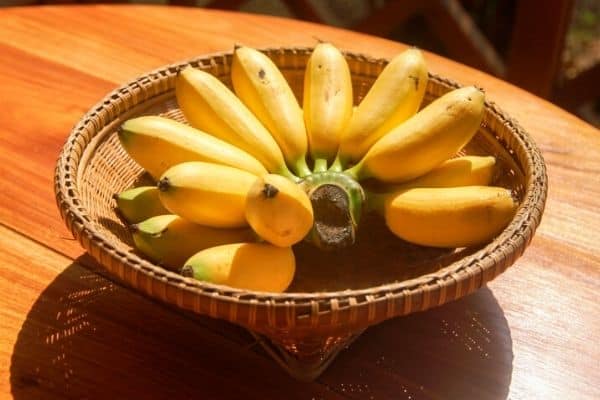
Lady finger bananas (Musa acuminata), also known as sugar bananas, are one of the most popular banana varieties for home gardens.
Banana plants are perennial herbs (not trees) and they grow from a large underground rhizome.
The plants form pseudostems, which are tightly packed overlapping leaf sheaths.
The pseudostem is often called the trunk, but it’s not a woody stem like a tree trunk.
Lady Finger Bananas have bright yellow flowers that are great for attracting hummingbirds and beneficial insects to your garden.
Growing conditions
Lady Finger bananas are most suited to tropical and subtropical climates.
They grow best in a spot that receives full sun but is protected from winds.
Bananas don’t like a lot extremely hot or cold weather so ideal temperature range is between 65 F (18 C) and 80 F (26 C) for most of the year.
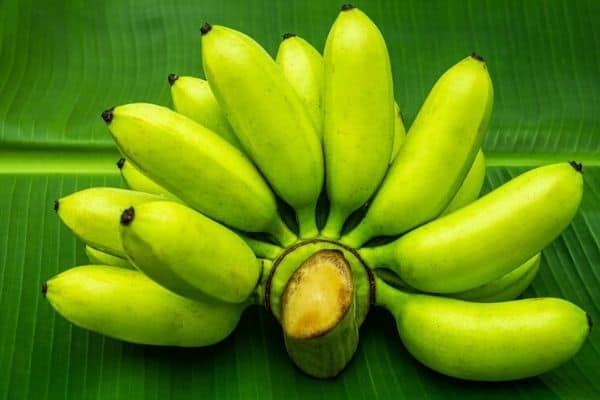
Soil
Bananas need rich, fertile soil to produce fruit, so you’ll need to dig some aged compost into the soil before planting.
The soil should also be easily draining to avoid the soil becoming waterlogged, which can lead to root rot.
Lady finger bananas can also be grown in large containers with good drainage holes.
Planting
You can buy small banana plants from nurseries and garden centers, or you may have a friend that can give you a couple of suckers to plant in your garden.
Lady finger bananas can’t withstand very cold temperatures or frost, so if you live in an area where temperatures fall below 50 degress F (10 degrees C), plant them in a container and move the container indoors when temperatures start to drop.
How tall do lady finger banana plants grow?
Lady finger banana plants can grow 5 to 25 feet (1.5 to 7.6 metres) tall but they don’t usually reach their maximum height in a backyard setting.
You can also find dwarf lady finger plants that grow up to 15 feet (4.5 metres) tall.
Caring for lady finger banana plants
Banana plants need lots of water and they should be watered every day during periods of extreme heat or drought.
Banana plants are also heavy feeders, so it’s important to feed the plants with a balanced fertilizer every few months during the spring and summer months.
Pruning
Lady finger banana plants will die off when they’ve finished producing fruit, but there should be other suckers coming up to take its place.
Leave a couple of the suckers in place and replant any excess suckers somewhere else in the garden or give them away to friends or family.
This will encourage new, healthy growth and make your plants bushier and more productive.
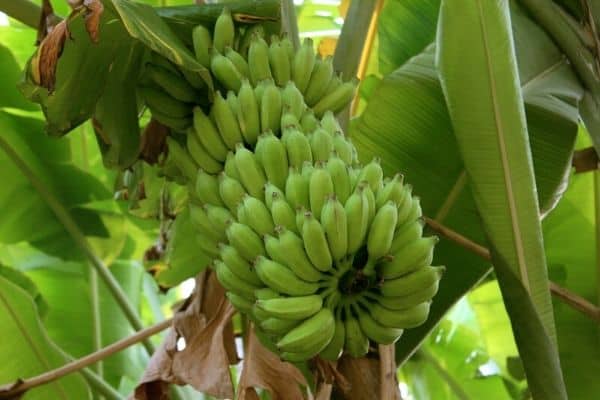
Growing lady finger bananas indoors
Growing bananas indoors is a good idea if you live in an area where the temperature drops below 50 degrees F (10 degrees C).
You can successfully grow a banana plant indoors as long as the temperature stays between 65 F and 80 F (18 to 26 degrees C). [1]
Place the pot near a big sunny window and use a humidifier to increase the humidity level indoors.
Pests & Diseases
Lady finger bananas are prone to attacks from thrips, nematodes, weevils, aphids and fungal diseases like Panama disease, which is a soil-borne fungus.
Check the plants regularly and if you spot any infestations you’ll need to take action quickly to save the plant.
Harvesting
Lady finger banana plants take about nine months to produce fruit and you can place a large, open ended bag over each bunch of bananas to protect them from birds, possums, flying foxes and other pests.
Cut the bunches off while they’re still green and allow them to ripen indoors or leave them on the tree until they’re fully ripe.
How long do lady finger bananas last?
Ripe lady finger bananas are best eaten within a few days of harvesting them.
Bananas that have been stored at room temperature will last about a week while fully ripe bananas can be stored in the fridge for up to 2 weeks.
Nutritional information
Lady finger bananas are high in fiber and potassium and low in fat.
They’re also high in vitamins B6 and vitamin C as well as magnesium, manganese and copper.
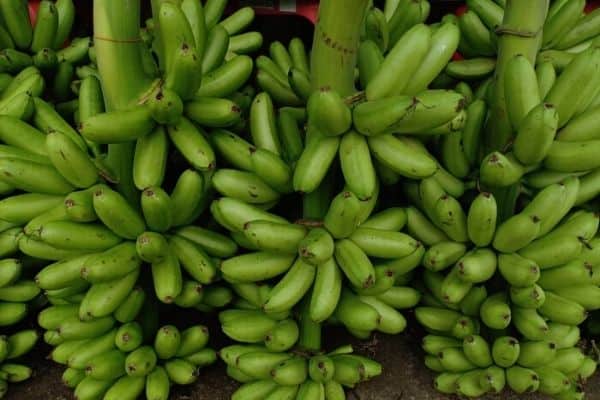
What’s the difference between cavendish and lady finger bananas?
Cavendish bananas are the most popular type of banana found in grocery stores and produce markets but they’re not as sweet as lady fingers.
Lady finger bananas are smaller than cavendish bananas and they don’t turn brown as quickly when they’re cut so they’re ideal for adding to fruit salads or desserts.
RELATED ARTICLES
- 11 Best Fruit Trees To Grow In Containers
- Banana Plant Growth Stages
- How To Fertilize Fruit Trees
- How To Keep Birds Away From Fruit Trees
Growing Lady Finger Bananas is fairly straight forward as long as you give the plants lots of sunlight, water and fertilizer.
Lady finger bananas are very sweet when they’re fully ripe so they’re perfect for a snack or to add to your smoothie.
Have you tried growing lady finger bananas in your backyard garden? Let me know in the comments below.
Are you on Pinterest? I have boards dedicated to Growing Fruit and Gardening Tips that you may find helpful. You can also find me on Facebook.

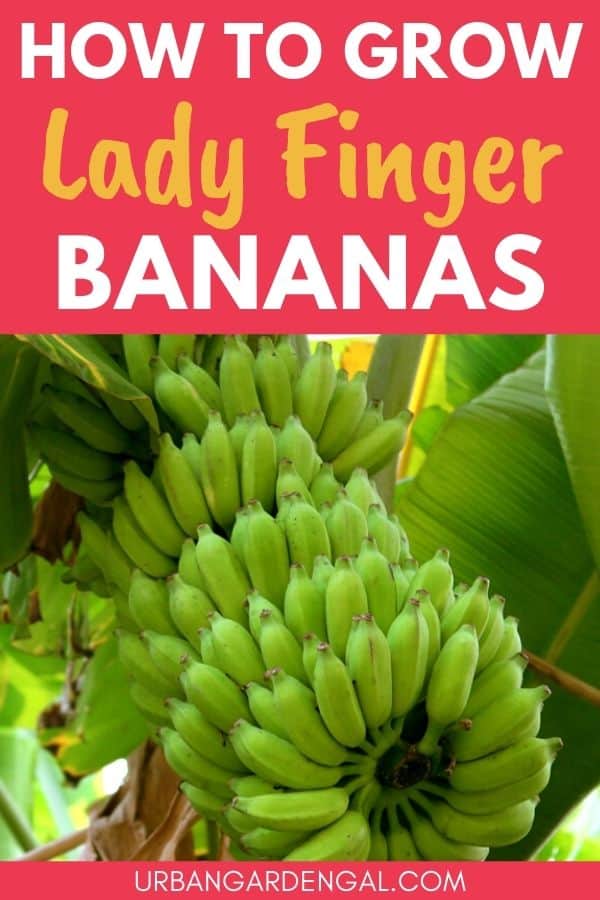
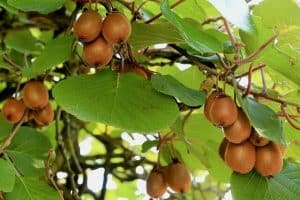
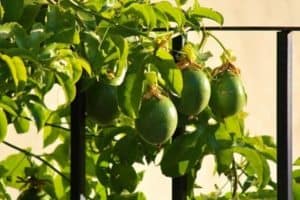
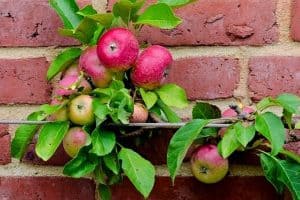

Thank you Kelly. Very informative I too am a passionate gardener and have been looking at my green bananas wondering when I should pick them. They’ve been there about nine months so I’ll pick them tomorrow and see what happens.
Hi there
My lady finger banana “trees” form a clump of 5 big trunks and 5 or 6 smaller trunks. I only get 1 bunch per season! Do I need to cull all the bigger ones, or all of them at the end of the season? (I live in an area that gets winter frost